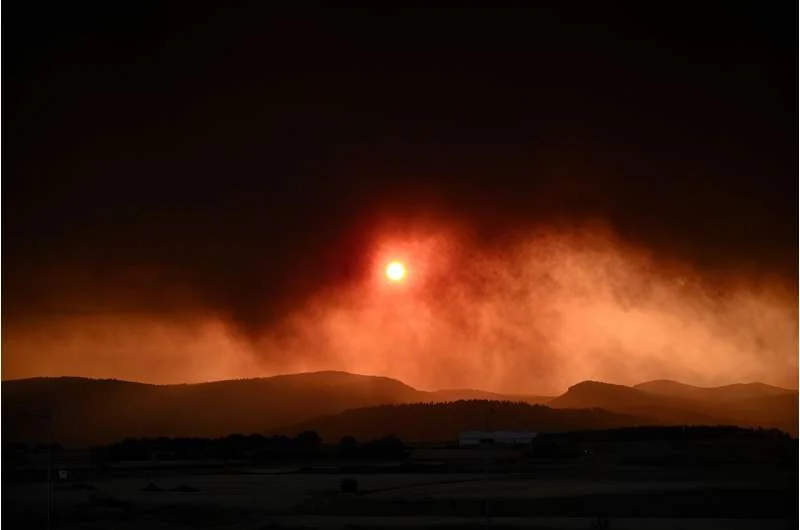People in poor countries are disproportionately harmed by air pollution caused by increasing fires in forests and fields around the world, according to a new study. Landscape fires include planned and uncontrolled fires in forests, shrubs, grasses, pastures and agricultural areas, such as the wildfires that ravaged countries such as Algeria, Canada and Greece this year.
By creating plumes that can travel thousands of kilometers, they pose public health risks, including increased death rates and worsening heart and lung diseases. Air pollution caused nearly 4.5 million deaths in 2019, according to a study published last year in the journal Lancet Planetary Health.
In a new study published in the journal Nature, researchers used data, machine learning and modeling to estimate global daily counts of fine particulate matter called PM2.5 and ground-level ozone concentrations emitted by wildfires between 2000 and 2019.
They found that annual air pollution from landscape fires in low-income countries was nearly four times higher than in rich countries, with the highest levels observed in Central Africa, Southeast Asia and South America. Increasing temperatures due to anthropogenic climate change increases the risk of fire.
Warming means pollution “may increase in the future,” said Shandy Lee, an associate professor at Monash University in Melbourne, Australia, who co-authored the study.
“Current evidence shows that fire smoke can increase health risks, including death and disease, which means people should be careful to reduce their exposure to fire air pollution,” he said.
Between 2010 and 2019, an average of 2.18 billion people per year were exposed to “significant” air pollution from landscape fire sources on at least one day; This is an increase of approximately seven percent over the previous decade.
This includes daily average PM2.5 levels exceeding the WHO 2021 recommendation of 15 micrograms per cubic meter of air; pollution from fire sources accounts for at least half of the total.
Africa has the highest average number of days exposed to “significant” fire-related air pollution per capita each year at 32.5, followed by South America with 23.1. In contrast, Europeans experienced significant pollution on average one day per year for a decade.
The five countries with the highest number of days of significant fire pollution per capita were in Africa: Angola, Democratic Republic of the Congo, Zambia, Congo-Brazzaville and Gabon.
“Climate injustice”
In a separate study, also published Wednesday in the journal Nature, scientists said smoke from wildfires in the United States is undermining decades of progress on weather. Cities in rich countries also struggle with poor air quality, often caused by pollution from transportation, heating and industry, which violates WHO guidelines.
Earlier this month, the UN’s World Meteorological Organization said climate change was leading to a “witch’s brew” of more intense and frequent heatwaves and subsequent pollution. According to Lee, reducing extreme weather events by mitigating the effects of climate change will help limit risk.
The researchers said their findings provide further evidence of “climate injustice”, with those least responsible for human-caused climate change suffering the most from bushfires that have become more intense and frequent as a result.
Changes in land management practices, including burning agricultural waste or fires deliberately aimed at converting wildland to agricultural or commercial use, could also help reduce the size of wildfires, they added.













